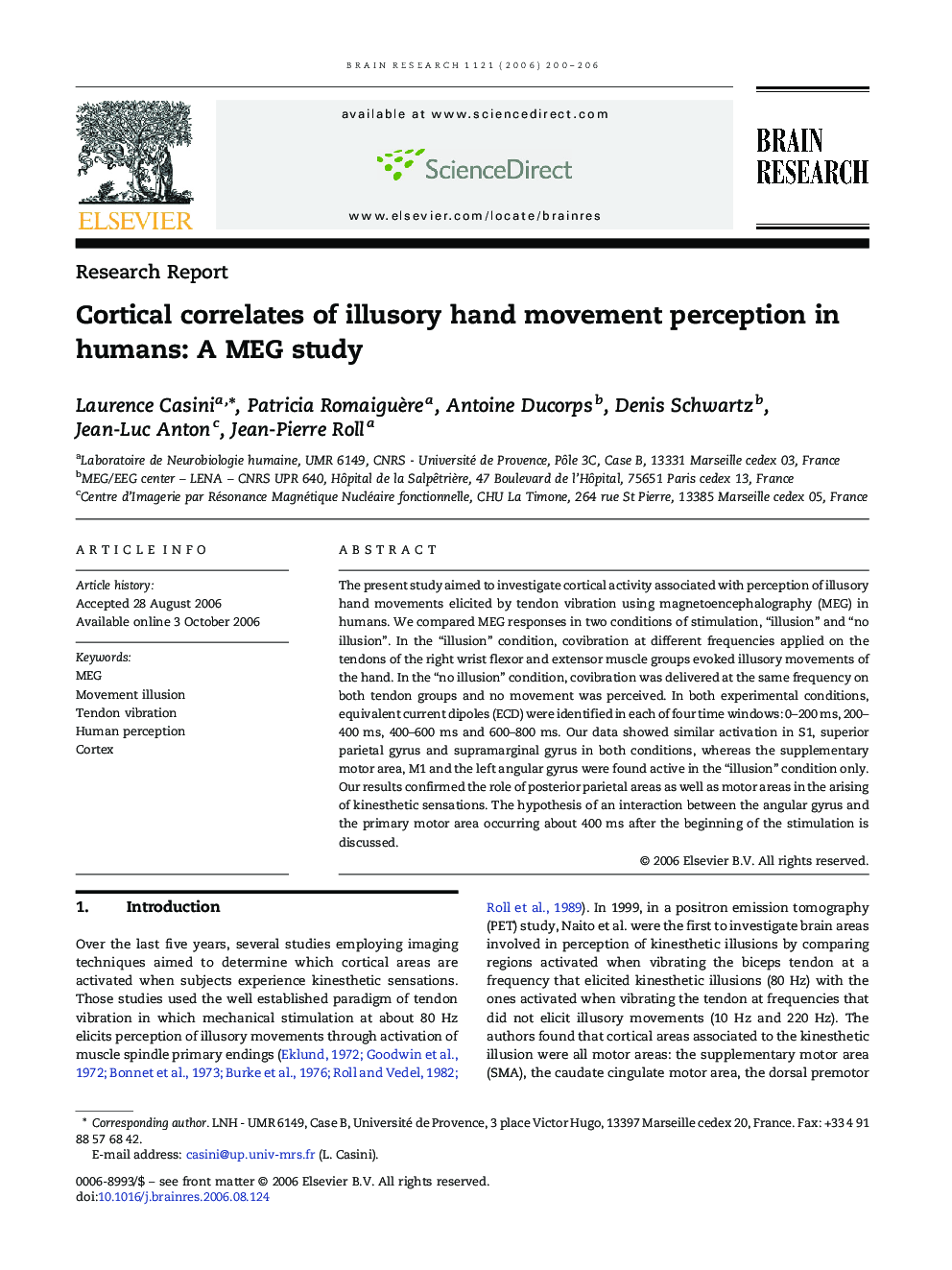| Article ID | Journal | Published Year | Pages | File Type |
|---|---|---|---|---|
| 4331980 | Brain Research | 2006 | 7 Pages |
The present study aimed to investigate cortical activity associated with perception of illusory hand movements elicited by tendon vibration using magnetoencephalography (MEG) in humans. We compared MEG responses in two conditions of stimulation, “illusion” and “no illusion”. In the “illusion” condition, covibration at different frequencies applied on the tendons of the right wrist flexor and extensor muscle groups evoked illusory movements of the hand. In the “no illusion” condition, covibration was delivered at the same frequency on both tendon groups and no movement was perceived. In both experimental conditions, equivalent current dipoles (ECD) were identified in each of four time windows: 0–200 ms, 200–400 ms, 400–600 ms and 600–800 ms. Our data showed similar activation in S1, superior parietal gyrus and supramarginal gyrus in both conditions, whereas the supplementary motor area, M1 and the left angular gyrus were found active in the “illusion” condition only. Our results confirmed the role of posterior parietal areas as well as motor areas in the arising of kinesthetic sensations. The hypothesis of an interaction between the angular gyrus and the primary motor area occurring about 400 ms after the beginning of the stimulation is discussed.
